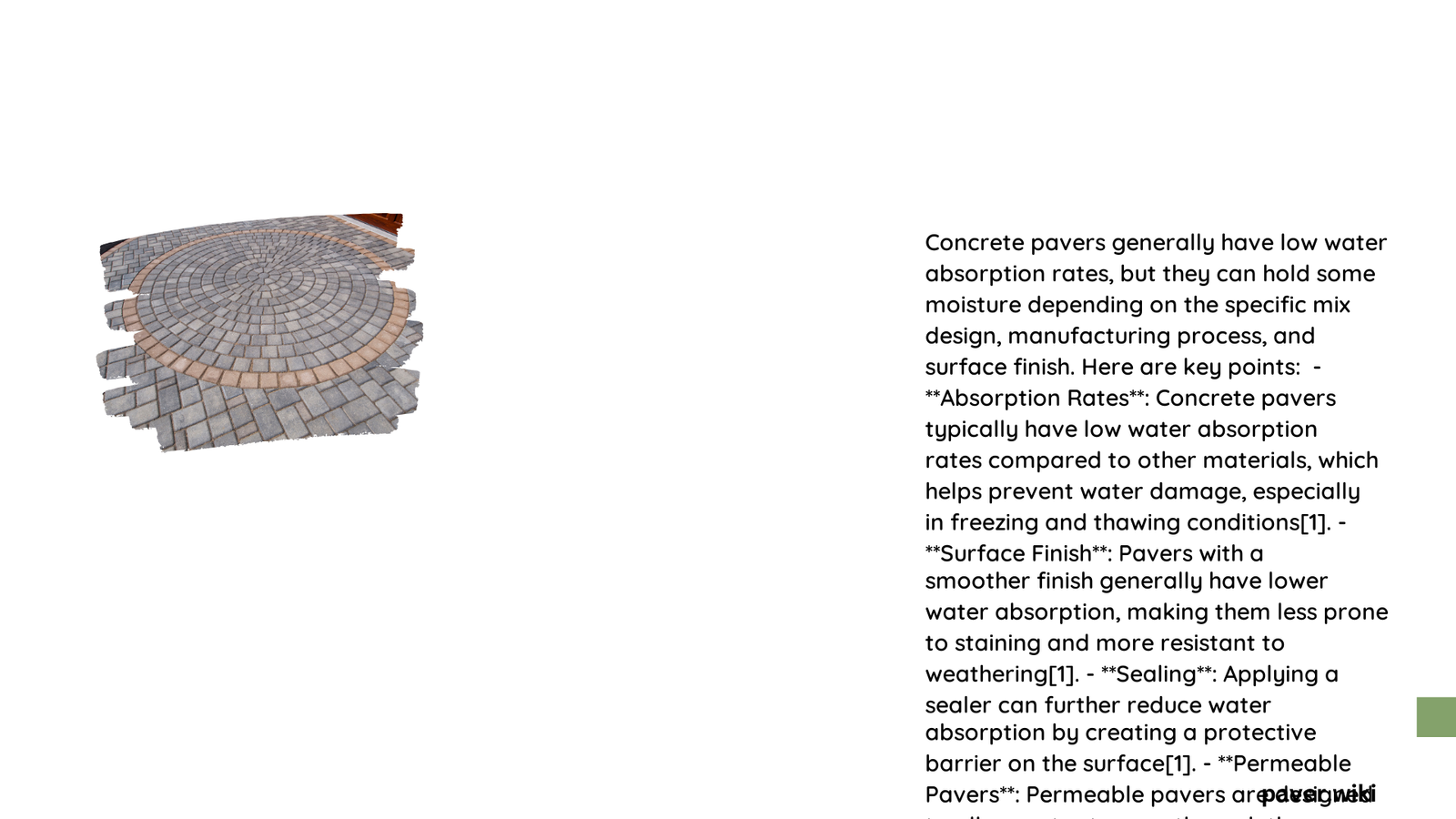Pavers are critical landscaping elements with complex moisture interactions. Understanding their water retention characteristics is essential for homeowners, contractors, and landscape designers seeking optimal performance and durability. Different paver materials exhibit unique moisture behaviors, influenced by composition, installation techniques, and structural design, which directly impact their ability to manage water effectively.
What Determines Moisture Retention in Pavers?
Moisture retention in pavers depends on multiple interconnected factors that significantly influence their performance. These factors include material composition, surface texture, installation methodology, and underlying substrate characteristics.
How Do Different Paver Materials Handle Moisture?
Concrete Pavers
- Permeable Concrete Pavers
- Void content: 15-25%
- Infiltration rates: 5-1,574 inches per hour
-
High water absorption capabilities
-
Non-Permeable Concrete Pavers
- Limited moisture retention
- Minimal water infiltration
- Primarily surface water management
Clay Pavers
- Rely on aggregate material in joints
- Permeability driven by joint fill
- Flow rates exceeding 2000 inches per hour
- Minimal direct water absorption
What Are the Key Moisture Management Mechanisms?
| Paver Type | Porosity | Water Infiltration | Drainage Efficiency |
|---|---|---|---|
| Permeable Concrete | High (15-25%) | Excellent | Very High |
| Clay Pavers | Low | Moderate | High |
| Standard Concrete | Low | Limited | Moderate |
What Factors Impact Paver Moisture Performance?
- Material Composition
- Aggregate quality
- Water-to-cement ratio
-
Particle size distribution
-
Installation Techniques
- Joint width consistency
- Base course preparation
-
Compaction methods
-
Surface Characteristics
- Texture
- Slope
- Joint design
How Can Moisture Impact Paver Longevity?
Excessive moisture can lead to:
– Structural degradation
– Freeze-thaw damage
– Moss and algae growth
– Potential foundation shifting
Strategies for Optimal Moisture Management
- Use permeable paver systems
- Implement proper drainage layers
- Select appropriate joint fill materials
- Maintain consistent surface grading
- Regular maintenance and cleaning
Professional Recommendations

Professionals recommend:
– Conducting site-specific moisture assessments
– Choosing pavers based on local climate conditions
– Implementing comprehensive drainage solutions
– Regular inspection and maintenance
Technical Considerations
- Infiltration rates vary significantly
- Material selection is crucial
- Professional installation ensures optimal performance
Conclusion
Understanding paver moisture dynamics requires comprehensive analysis of material properties, installation techniques, and environmental factors. Proper selection and installation can mitigate potential moisture-related challenges.
